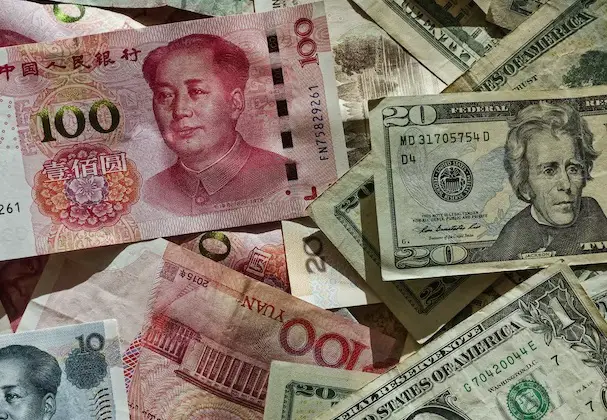On Wednesday, Reuters reported that the US dollar was surpassed by the yuan as the most-used currency in cross-border transactions in China last month, according to official statistics.
In March, cross-border payments and receipts in yuan rose from February’s $434.5 billion to $549.3 billion, according to Reuter’s analysis, using data from the State Administration of Foreign Exchange.
The yuan comprised 48.4% of all cross–border transactions, demonstrating Beijing’s promotion of the yuan, and the recent trend of shifting away from the dollar. On the international front, the dollar’s share of China’s international trade settlements fell from 48.6% in February, to 46.7% in March.
The outlet noted that the volume of cross-border transactions includes both current and capital accounts. Although still comparatively low, the share of the yuan in global settlements has been steadily rising for several years.
China’s shift away from the dollar in international trade has accelerated of late, following the imposition of sweeping sanctions designed to restrict access to the use of the dollar in international trade settlement, imposed by the Western powers against Russia, over the conflict in Ukraine. As Russia, a major energy producer and exporter was forced to offer its energy products at a discount, other nations were given a financial incentive to use new means of trade settlements which did not involve the use of the dollar in order to gain access to cheap Russian energy. India, a major purchaser of Russian crude products, has also now taken steps away from using the dollar in trade settlements, trading with Russia in rubles and rupees.
Russia has continued to accelerate away from the dollar as it has encouraged the use of alternative currencies in trade transactions over the last year. Russian President Vladimir Putin publicly stated the yuan should be used more widely, not only in trade between Russia and China, but also in Russian trade with other countries, such as in Africa and Latin America.
The most recent data released by the Bank of Russia also shows that the yuan has taken on a major role in Russia’s foreign trade, now that it can no longer use the dollar.

